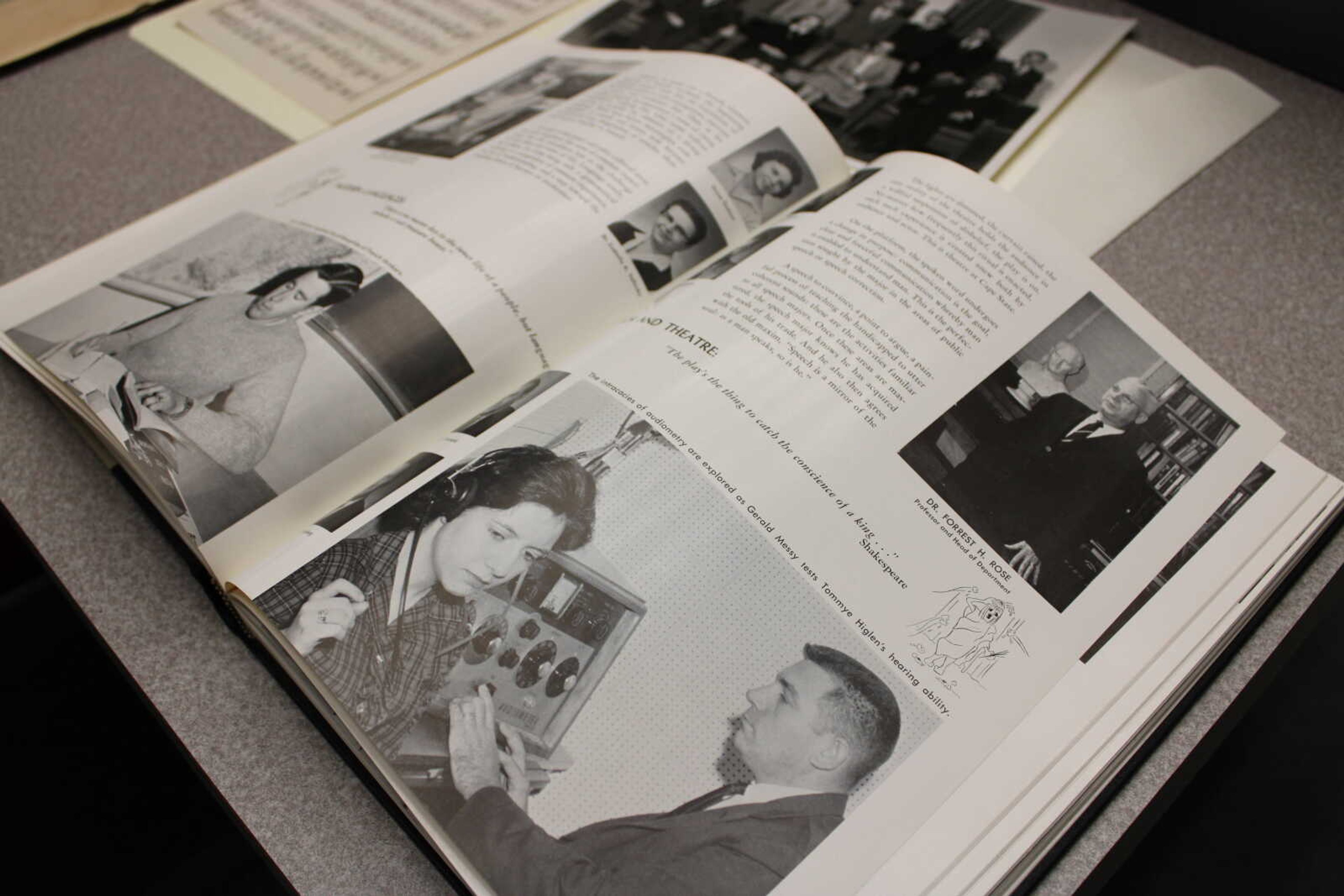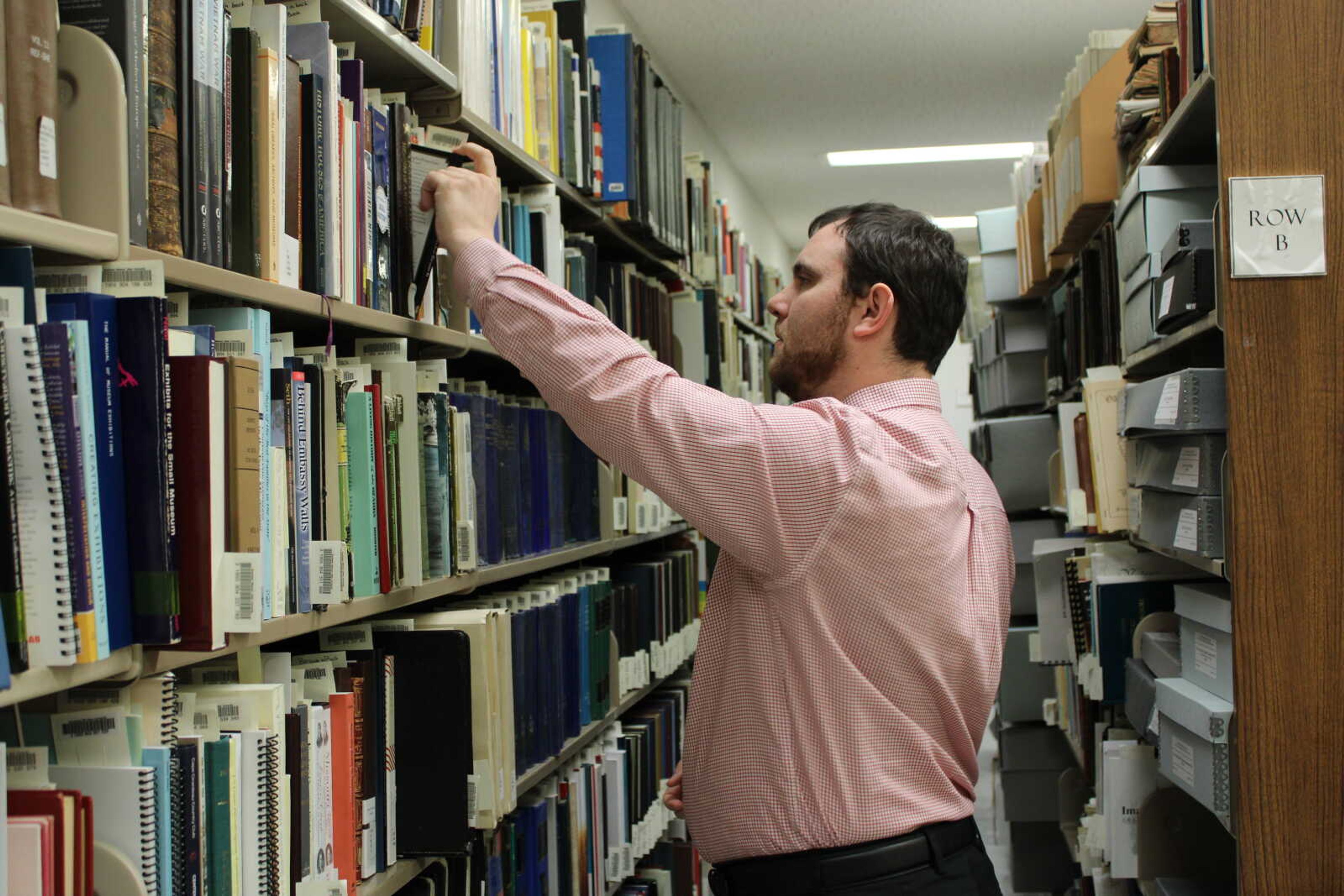Archive librarian Tyson Koenig holds the secrets to SEMO's most-valued history
The walls of SEMO’s special sections and archives room tell the story of the past 150 years at SEMO through black-and-white photos, vintage yearbooks, original sport uniforms and the knowledge of SEMO’s archive librarian. The librarian sits in his office everyday, preserving and collecting memories of the past and present, while allowing students and faculty to learn more about the campus they have come to know as SEMO.
Records of the university’s history have been maintained since the beginning of its construction. Beyond simply recording classes and professors, archivists have documented the decisions and effects of past decisions by administrators, as well as the lifestyles of students living on campus.
Kent Library special sections and archive librarian Tyson Koenig said the position of an archivist is important because it allows one to record the past, which helps university officials and others to make decisions in the future, and to commemorate and remember SEMO’s history.
SEMO's archives provide access to information such as Sagamores dating back to the early 1900s, images and layouts of past buildings, records from the president’s office and photos of student life throughout the years.
Koenig said he strives to find and preserve students’ day-to-day experiences beyond the memorable events and well-known names.
“What we want is evidence of people's lives,” Koenig said. “So, if that means you were a student at Southeast in the 1960s and you have your scrapbook or your old photos that you kept, that's what we want.”
Koenig said SEMO’s history tells a more complex story about its personality and shows how it has impacted the people who have found their way to the university. Because SEMO is the only institute of higher education within 100 miles in the state, the university has integrated into the community and region to attract a broad range of students, he said.
“I think that one thing that comes across about the history of SEMO, from seeing the archives and seeing the records, is that we've always had dedicated students and dedicated faculty,” Koenig said. “We've always been the place in Southeast Missouri that people come to for higher education.”
Koenig said his favorite part of SEMO’s history doesn’t entail just one moment, but the evolution of the university throughout the years. What he finds most interesting is seeing the story unfold over time from a teacher’s school with only a handful of students to the large university it is today.

“It's pretty startling when you think of all the things that the university does now and how it's grown,” Koenig said. “We have an enormous number of academic programs, we have the River Campus, we have statewide recognition for various programs. To see that progression and growth over time — even the physical growth of the campus — is really something that's, you know, quite, quite impressive.”
History and anthropology professor Steven Hoffman said he understands the importance of preserving the long-term memory of the university.
“If we had to rely just on the short-term memory of the people who are here now or the papers that they have on their desks now, then we would have lost our connection to all of those things that happened in the past,” Hoffman said.
Hoffman said having a repository where students and faculty are able to look back and visit the past allows them to keep that connection between then and now.
“It just makes us more grounded and more in touch with who we really are and kind of connected to the wholeness of our being instead of just part of it,” Hoffman said.
Junior computer science major Emmanuel Reyes said he has heard of the archives but has never seen them himself, even though he understands the necessity of preserving history.
“We learn from past experiences, and if we have all these primary sources of first-person experiences, we can learn without having to experience it,” Reyes said. “It's like reading a book. You can sort of glean these experiences from other people and other lives just by reading about it or seeing it.”
Students can access SEMO’s archives by going to the third floor of Kent Library in Room 306.







